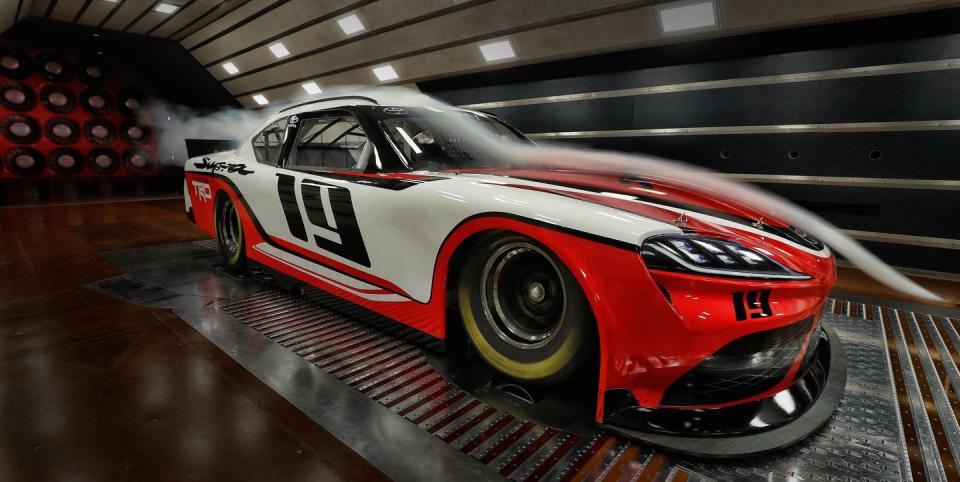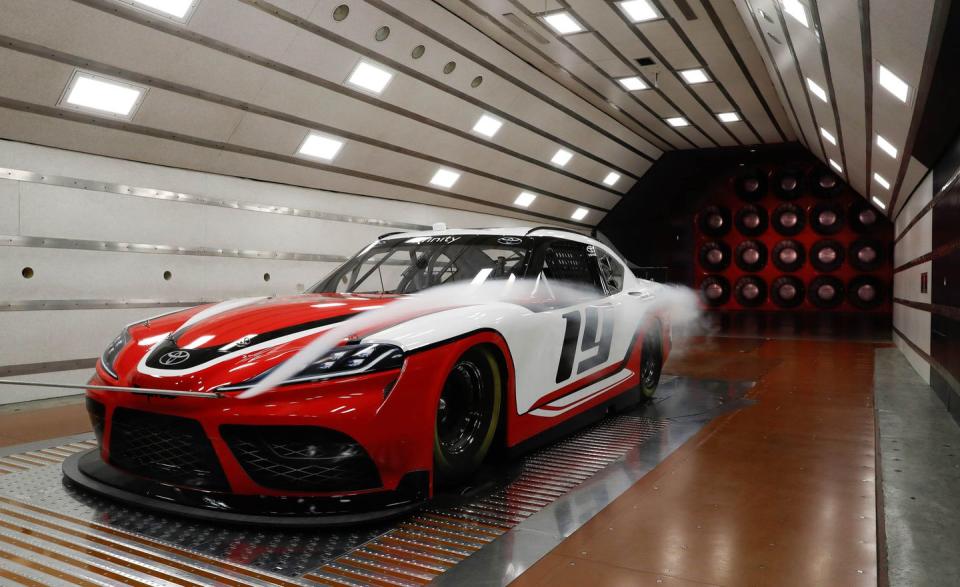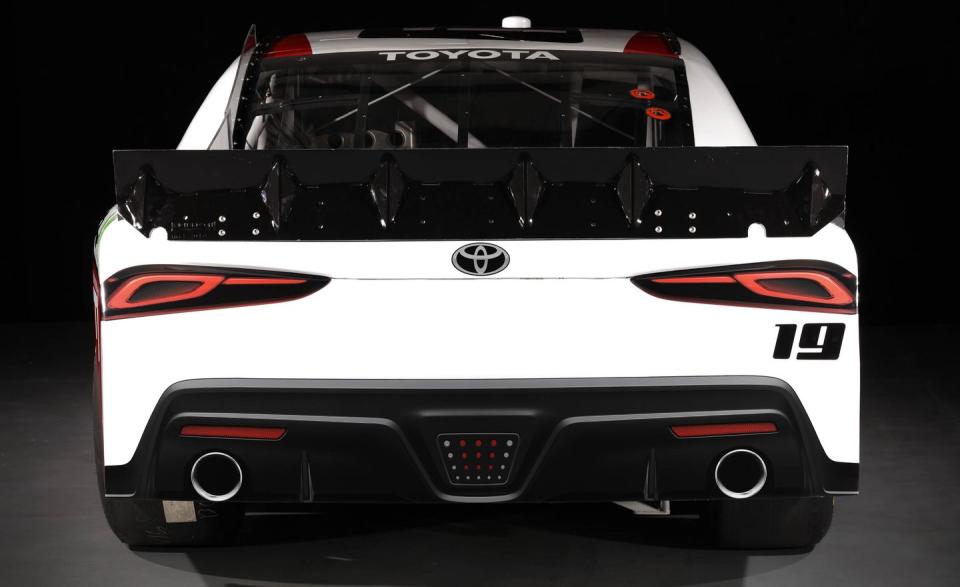How the NASCAR Xfinity Series Toyota Supra Lines Up with the Production Model

Call it fortuitous that NASCAR’s rules are shifting back toward visually linking race cars to their streetgoing counterparts just as Toyota is gearing up to relaunch its Supra in the United States. The Toyota sports car needs a big publicity push-despite a 1993 model’s starring role in the Fast and Furious movie franchise, there’s no getting around the Supra’s 20-year absence from U.S. dealerships. Next year’s NASCAR Xfinity Series should help, then. Toyota has chosen to field its racer in Supra makeup, and recent rule changes mean the race cars from every manufacturer will bear a closer resemblance to their roadgoing inspirations.
NASCAR also abandoned its requirement of North American assembly for the nameplates racing in all of its series, opening the door for Toyota to model its Xfinity racer off its newest sports coupe. The rules so far allow factory racing divisions to manipulate only the front graphics (the “face” above the bumper cutline), hoods, front fenders, rear quarter-window outlines, and tails. Since we’ve all yet to see the Supra in its final, salable form, it’s worth going over how Toyota’s 2019 Xfinity car translates visually to the production car, and vice versa. If it fares well in the Xfinity Series, it seems possible that the Supra could replace the Camry in the Monster Energy Cup races, too.
Before we get into details, understand that, regardless of make and model, NASCAR rules stipulate a single blocky profile, a silhouette that must fit inside one standard template. Although the rules stop short of requiring identical bodies, they do maintain common dimensional maximums and basic proportions. Toyota noted that messing with the cars’ styling is allowed-to a point. Every car must stay within allowable drag and downforce parameters. The good news, both for manufacturers and fans, is that these parameters allow for a good deal more visual differentiation than they did previously, while keeping the cars’ performance relatively equal.
For the Supra, Toyota has taken the headlight shapes and core nose design from the production car and applied it to the Xfinity racer’s bodywork. The designers-based in Toyota’s Calty design center, the same folks who worked on the street-legal Supra-did their best to apply the car’s deep-draw, curvy face to the upright NASCAR-legal body. Although we haven’t seen the final production Supra, we’re told it’ll look a lot like the FT-1 concept that Toyota debuted at the 2014 Detroit auto show (and the more recent GR Supra Racing concept), and sure enough, the Xfinity car’s face looks similar. Although the headlights are merely graphic stickers, they’re set into sculptural nacelles and flow into the bulging fenders, which Toyota also has massaged to its liking within the parameters of the rules. Below the Xfinity Supra’s bumper cutline, Toyota’s designers threw on a trio of stickers that mimic intakes.
Moving from the front of the Xfinity Supra to the rear, the eye traces along a distinct V-shaped hood bulge that carries off the Toyota badge in the nose. At least in the sponsor-free red, white, and black livery of Toyota’s prototype, there are hints of the Supra née FT-1 concept’s front and rear fender shapes (peer closely at that black-colored stripe running just above the rocker panel and kicking up over the rear wheel). Teams are allowed to define the rear quarter-window shape using stickers to selectively cover parts of the window, and Toyota went with a pointy, triangular shape said to reflect the production Supra’s.
Visually, the Xfinity Supra’s tail resembles that of the actual Supra only in the shape of its taillights (more stickers) and diffuser element, with two large, round exhaust outlets and a central brake-light/backup-light combo (also stickers, only bigger ones). Teams are allowed to manipulate the styling of their cars’ tails only between the edges, meaning the hard creases defining the trailing edge of each rear quarter-panel.
A Visual History of the Toyota Supra: Glorified Celica to Fastly Furious Movie Star
Toyota to Race Supra in NASCAR’s Xfinity Series, Replacing Camry
So there you have it: The Xfinity Supra looks mostly like a Supra, and it’s neat that it’ll be going head to head with racers designed to resemble Ford’s Mustang and Chevrolet’s Camaro (both also rear-drive coupes in real life). It’s also worth celebrating NASCAR’s rule changes, which attempt to bring its race cars into line (at least visually) with their roadgoing counterparts, even if their big pushrod V-8s might not bear any resemblance to the turbocharged four-cylinder, six-cylinder, and more modern V-8s offered between the Supra, Mustang, and Camaro (although, to be fair, that last model still offers a pushrod V-8). The question of whether the NASCAR exposure will bump up public recognition of the Supra name will have to wait to be answered until next year, after the 2019 season kicks off at Daytona in February.
You Might Also Like

 Yahoo Autos
Yahoo Autos 

